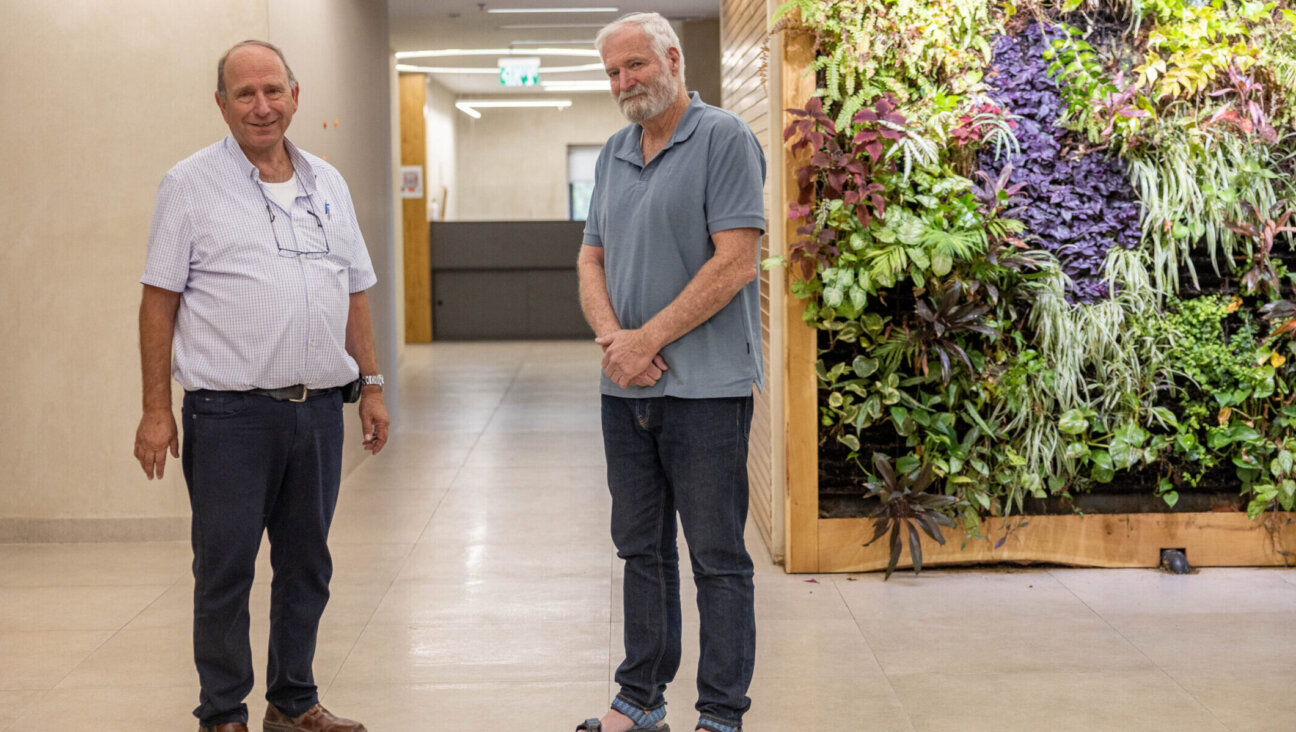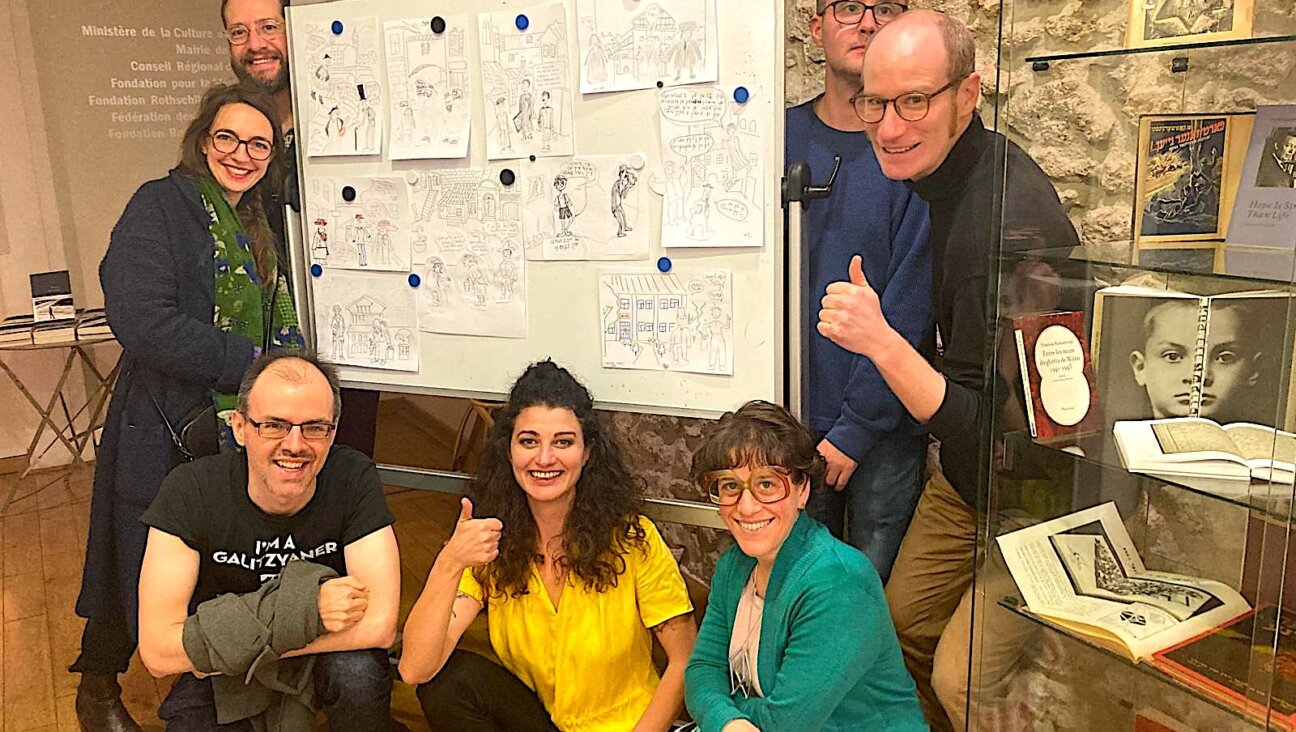December 29, 2006
Judith Regan Is No Antisemite
Judith Regan an antisemite (“An Editor of Many Sins, But… ‘Antisemite’?” December 22)? She’s got a brilliant mouth and a Sicilian temper, but I’ve been her friend for 22 years and she doesn’t have a Jew-hating bone in her body. You can ask my daughters, whose bat mitzvahs she attended.
Her enemies within HarperCollins — my publisher, by the way — may want to fire her for bad taste or recalcitrance. (They can’t fire her for losing money, as she was their cash cow.) But throwing out antisemitism is playing the same pathetic game that O.J. Simpson’s lawyers played to keep him out of jail.
Judith Regan is welcome at my Shabbat dinner any old Friday.
Roger Friedland
Professor of Religious Studies
University of California, Santa Barbara
Santa Barbara, Calif.
Did Bard Know Hebrew?
I am not persuaded by author Kenneth Gross that, as the title of his book argues, “Shakespeare Is Shylock” (“Double Vision,” December 22). However, as regards the collateral antisemitism debate, several items are striking.
To begin with, Shakespeare did not select a biblical or Hebrew-sounding name for the highly identifiably Semitic character of Shylock. How odd.
If, however, you transliterate the word “Shylock” into Hebrew characters and subsequently read the results right to left, you approximately wind up with — depending on whether you employ the letter kaf or qaf for the “ck” sound and whether you use the vowel waw for the “o” sound — either “kol ish,” meaning “everyman,” or “qol ish,” meaning “voice of a man.”
As Pete Rose might say, figure the odds. Did Shakespeare, or perhaps one of his close acquaintances, know some Hebrew? If this speculation on my part is correct, then this linguistic oddity goes far to remove the taint of antisemitism from Shakespeare’s portrait of Shylock.
S.R. Cohen
Baltimore, Md.
Counting Population Is Not a Competition
Estimating the number of American Jews is not a competition (“New Studies Put U.S. Jewry Over 6 Million Mark,” December 22). It matters relatively little if my numbers are bigger than yours.
Imagine, if you will, an analogous situation: that the Central Bureau of Statistics in Israel announced tomorrow that it has underestimated the Jewish population of Israel by about 1 million.
Would that change the pressing nature of a single one of the critical issues currently before the Israeli public — Iran’s nukes, Hamas in the south and Hezbollah in the north, the widening social gap, the confusion in the military’s General Staff, incompetence in the police force or the murky ethical status of the country’s president? These current problems would simply be all the more pressing and worrying, given that nearly 6.5 million Jews would be affected, rather than merely 5.4 million.
Something similar applies to American Jewry. Concern over what ails the Jewish community in the United States is not a matter of the numbers, and it considerably predates the current numerical argument. It goes back at least to the 1980s and is related to substantive issues: education, intermarriage, community life, group relations with other minorities and political influence.
Whether there are 5 million or 6 million American Jews, none of those concerns drops out of the picture. They simply apply to more Jews, some of whom may have escaped earlier enumeration.
Or not, as the case may be. Either way, a specialist’s expertise is not necessarily required to add two and two: that is, to figure out that marriages postponed to later in the life cycle, attended by lower than replacement-level birthrates and combined with rising rates of intermarriage, are not likely to produce rampant growth for a minority population. And no one is suggesting that the new figures alter these critical features of contemporary Jewish life in America.
If it is important to America’s Jewish pundits that the community should feel bigger and, perhaps, more self-confident, it should be just as important to declare that more Jews out there does not necessarily mean progress. Does more Jews mean that there are more affiliated and involved men, women and children, or that the minority of the affiliated and the active are now even a smaller percentage of the whole than we thought?
Are those extra million Jews filling the pews, the community centers, the political action committees, the adult study groups and the subscription lists of Jewish publications? Or are they second- or third-generation products of mixed marriages with only marginal filial attachments to their Jewish families and who may have, until now, slipped through the data-gathering process? Do the added thousands and thousands of Jewish children show up in day school or summer camp or Hebrew school registrations?
One wants to applaud the Jews, wherever they live, for their commitment to maintaining as high a standard as possible in every field of endeavor. It is only natural that we want to think that they are getting it right, that they are making a reality of their ideals. If there really are 6 million Jews in the United States rather than just 5 million, that only means that they will have to try that much harder to fulfill their own expectations.
Eli Lederhendler
Professor of American Jewish History and Institutions
Avraham Harman Institute of Contemporary Jewry
Hebrew University of Jerusalem
Jerusalem, Israel
The American Jewish Committee’s study almost certainly has a significant number of people who were counted twice or even three times.
People who have a home in Boca Raton, Fla., for the winter, the Berkshires for the summer and Manhattan for the fall and spring might be counted three times, despite the AJCommittee’s best efforts. Multiply that by all the Midwest Jews who winter in Arizona, Nevada or California, and you can see where the difference between the AJCommittee’s study and previous ones comes in.
Larry Glinzman
Ormond Beach, Fla.
Please address letters intended for publication to the editor of the Forward, 45 East 33rd Street, New York, NY 10016, and provide your name, address and telephone number. Letters may be wired via fax to (212) 447-6406 or via electronic mail to [email protected] (please include street address in e-mails). Shorter letters stand a better chance of being printed. Letters may be edited for space and style.
A message from our CEO & publisher Rachel Fishman Feddersen

I hope you appreciated this article. Before you go, I’d like to ask you to please support the Forward’s award-winning, nonprofit journalism during this critical time.
We’ve set a goal to raise $260,000 by December 31. That’s an ambitious goal, but one that will give us the resources we need to invest in the high quality news, opinion, analysis and cultural coverage that isn’t available anywhere else.
If you feel inspired to make an impact, now is the time to give something back. Join us as a member at your most generous level.
— Rachel Fishman Feddersen, Publisher and CEO























